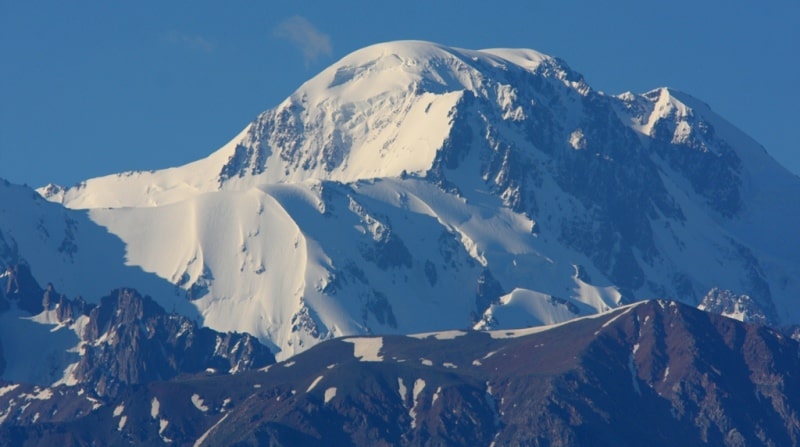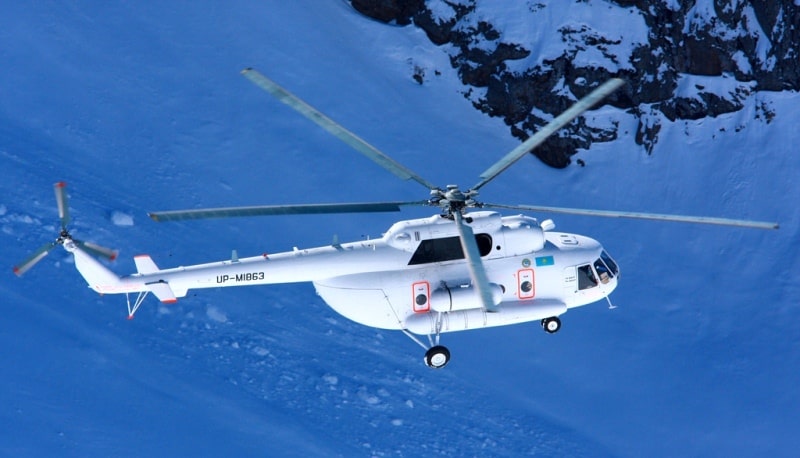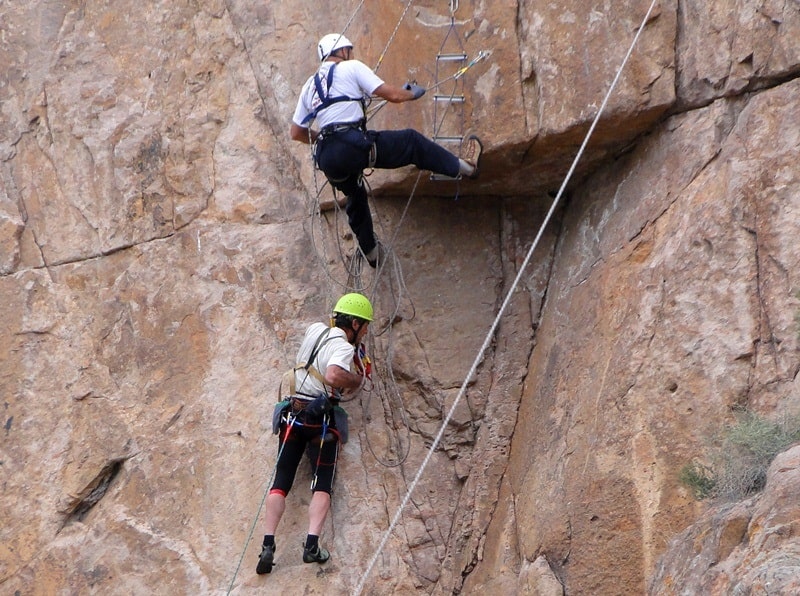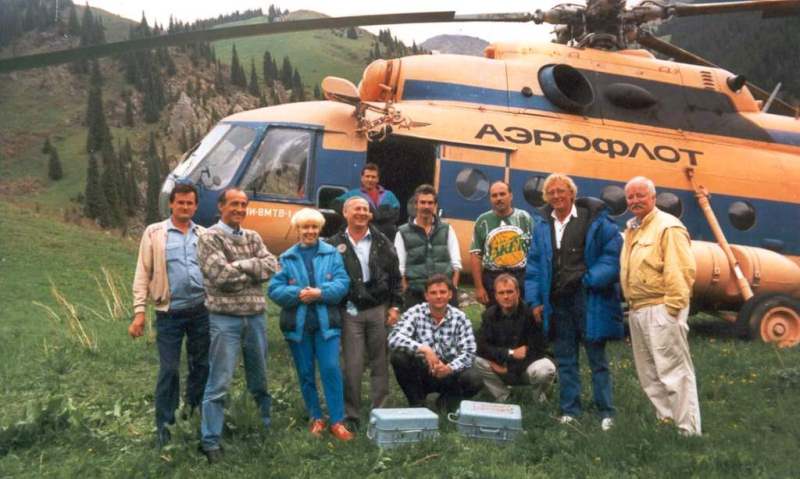You are here
History of ascents of Talgar.

Mountains of Central Asia.
“On September 3, I got up much earlier than sunrise and, accompanied by one Cossack, went to the nearest hill in order to enjoy the charming picture of the morning shimmer (Alpengluhen), which opened before us through the wide excavation of the Talgar valley of the snowy Talgar group. At a time when the low foothills nearest to us with their soft, rounded outlines were still barely protruding from the night cover, towering at the head of the Talgar Valley, a sharply defined jagged snow ridge with a three-headed giant (Talgarnyn-tal-choku) was already shining with its eternal snows. in the bright purple rays of the sun, not yet seen from behind the distant horizon"
Semenov Tien-Shansky. "Journey to the Tien-Shan in 1856 - 1857". 1946 Page 95
Travel in Almaty region.
The domed Talgar peak, 4978.9 meters above sea level, is located in the eastern part, in the main ridge of the Zailiysky Alatau ridge, on the territory of the Almaty Nature Reserve in the Talgar district of the Almaty region.
The north-western slopes of Talgar have a trapezoidal shape, the south-western and north-eastern ridges of the peak rise like rocky slopes above the firn fields of the Korzhenevsky glacier. The modern Kazakh name is Talgarnyn-tal-choku.
The main interpretation (according to Gorbunov Aldar Petrovich): from the Mongolian word delger (wide, extensive). Another option is not excluded: “tal” - flat (old Kirg.) and “gar” - mountain (Sogd.). Indeed, the top of the mountain is, as it were, cut off: it is flat.
There is another interpretation - in the Mongolian language there is the word "tavgar" - a peak with a flat top. It is possible that "Talgar" is a distorted word "tavgar" (Gorbunov A.P. "Mountains of Central Asia. Explanatory dictionary of geographical names and terms." - Almaty, 2006. P. 88).
The first attempt to climb this giant was made in 1930, when Grigory Beloglazov, with the participation of Vasily Logvinovich Semenovsky from Moscow, unsuccessfully tried to get to the Talgar massif from the south.
V.L. Semenovsky and G.I. Beloglazov soon made a second attempt to storm Talgar, but from the north. According to V.L. Semenovsky, he conquered him. I. Lobanov wrote about the ascent in 1936 in one of the magazines (Nakatkov Yu.S. “History of Tourism in Kazakhstan.” – Almaty, 2001, p. 70).
Since 1935, an active struggle for the conquest of Talgar began. This summer, a group of Alma-Ata mountaineers led by Kh. Rakhimov, trying to climb Talgar from the north, reached a group of rocks in the main ridge north of Talgar and called them Kopr peak.
For the first time, the South-Western Talgar, 4860 meters above sea level, was conquered from the north-west on September 28, 1935 by a group of 15 Almaty climbers led by Viktor Matveyevich Zimin, consisting of: Gusev, Tyutyunnikov, Lobanov, Tysyashnev, Khimich, Karymbaev, Musabaev, Vysotsky, Kharchenko, Starikov, Chelenko, Komolov, Meshcheryakova (who, at the request of the men, was the first to enter the impregnable Talgar peak).
The first ascent to the main peak of the massif along the northeastern ridge through the northern peak was made in 1938 by a group of climbers from the city of Stalinsk (now the city of Novokuznetsk, the Kemerovo region of the Russian Federation) consisting of Leonid Katukhtin, Grigory Makatrov and Ivan Kropotov.
In 1938 (according to M.E. Grudzinsky), a group of climbers from Novosibirsk, consisting of A. Alekseev, P. Bogdanov, V. Golubevsky, V. Efimovsky, S. Nagibin under the leadership of E. Alekseev, and in the summer a group of Siberian climbers consisting of L. Katukhtin, I. Kropotov and G. Makatrov ascended the main peak of the Talgar massif along the same path.
In August 1940, a group of climbers consisting of V. Palevin, G. Maslov, G. Makatrov traversed the Talgar massif from the northeast to the south, climbing along the Kopr glacier to the main ridge, from where along the eastern ridge - to the dome of the Talgar massif to the top and descended on southeast ridge to the Korzhenevsky glacier.
In difficult winter conditions of 1940 - 1941, a group of Colonel D. Gorin (V. Radel, N. Chekmarev and K. Gusev) climbed the main peak of Talgar along the southeastern ridge. The group did not find the tour and, leaving a note on a large snowy ridge, sticking an ice ax into the snow, descended along the ascent path (for more information about the ascents of Dmitry Gorin, see "Wind of wanderings", 2013. No. 4. Peaks are named after them. P. 60 - 63 ).
Finally, in the Talgar massif, all the peaks were defeated, and in 1940 three climbers, Pelevin, Makatrov and Maslov, made a traverse of all seven peaks of the massif at once. They pass from north to south all the peaks in one ascent, without descending from the ridge.
During a trip to one of the peaks of Talgar, the climber Ionov found stones in the moraine of the Severtsov glacier, which turned out to be pieces of valuable rock - molybdenite. Subsequent long searches for the deposit were unsuccessful and were discontinued.
Only Salanov, an Alpinist from Alma-Ata, could not come to terms with this and continued his search. With comrades and alone, he went through many gorges, climbing into the most remote places, but there was still no molybdenite.
Once Salanov had an idea about climbing Ordzhonikidze Peak in a new way, from Talgar. Together with the climber Terlinsky, he went on this trip, and this time the indefatigable Salanov was lucky. When it was already dark, and after a difficult hike at the foot of the peak, a tent was set up, he went to inspect the area.
In the light of the moon, among the stones of the moraine, near another peak - Mayakovsky Peak, he found shiny pieces of molybdenite. In the morning, on the steep wall of the peak, rising above the glacier, climbers saw quartz veins with inclusions of molybdenite.
A few days later, a strong group of climbers set off for Mayakovsky Peak, with whom Kolpakov, an engineer-geologist, went. Using a complex climbing technique, climbers climbed to the deposit and took samples from there, which confirmed the enormous value of Salanov's find.
It should be noted that Chekmarev N.M., master of sports in mountaineering, after the war, in 1950, led the expedition of the Central Council of the DSO "Lokomotiv" during the ascent to the Palgov Peak, 4720 meters above sea level, in Kungei Alatau ("Defeated Peaks. 1970 - 1971.".
Collection of Soviet mountaineering. Under the general editorship of P. S. Rototaev. - M .: Thought, 1972. P. 196). In 1949, the climbers of the Metallurg camp decided to storm Talgar from the north. The main group included Leningraders: F. Lemstrem - the head of the group, Boris Krasnokutsky, A. Berdichevsky, then Konstantin Makarevich from Sverdlovsk and Nikolai Divari from Almaty.
In severe weather conditions, climbing to the top of Iin-tau along a three-hundred-meter rock wall, and then descending to the ridge, bypassing the "gendarme" guarding the approaches to Talgar, passing a sixty-degree ice wall more than 100 meters high, the group goes to the rock outcrops of the summit plateau.
Here, 80 meters below the highest point of the massif, the tour is difficult. The highest point itself is located to the south on the huge snow-ice ridge of the top of Talgar. On August 2, in the morning, on a hard snow crust, the group ascends to the Main Peak of Talgar Peak.
Geographical coordinates of Talgar peak: N43°07'07.82" E77°20'18.96"




Authority:
Valery Korablev.
Zatulovsky D.M. "On glaciers and peaks of Central Asia." OGIZ, State publishing house of geographical literature. 1948
Photos by
Alexander Petrov.







